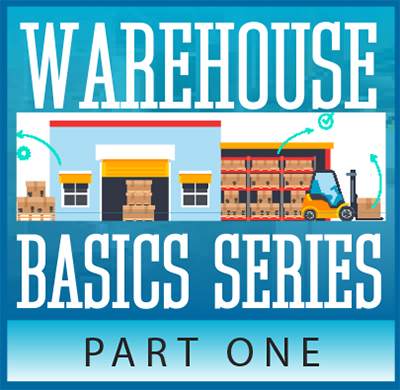Receiving 101: Setting the Table for Success
A seemingly simple step, receiving is an opportunity to make or break efficiency later in the distribution process.
Welcome to Warehouse Basics, a five-part series in which Modern will unpack the essential elements of functional areas in the warehouse. As the first entry in the series, this article will focus on receiving, followed by putaway and storage, replenishment, packing and shipping, and picking. Informed by industry experts, these articles are intended to capture a snapshot of the current state of materials handling practices.
Computer science experts coined the phrase “garbage in, garbage out,” to describe the way a single bit of bad input can spread through a calculation to ruin the entire output. The same holds true at the receiving dock, where a misstep now will create bigger headaches later. It’s the first and best place to get the inventory count right. Accurate, efficient parts counts prevent a production shutdown on an assembly line and ensure a distribution center can send complete and timely orders.
Before the advent and widespread adoption of advanced shipping notice (ASN) technologies, the receiving process began with a truck’s arrival in the yard and was often filled with surprises. Without much detail about the product, carrier, packaging type or arrival time, the receiving process could look like a mad scramble for answers. Nobody likes to think of their products as garbage, but this sort of input does not bode well for inventory management in the rest of the building.
Whether by ASN or some other method, the more visibility you have into what’s coming, the greater your ability to manage at a detailed level. This will ensure a distributor gets what it needs when it needs it, while minimizing out-of-stock positions and increasing the speed with which critical products reach stores or customers accurately. The key is the information flow across entities in the supply chain before receipt. When suppliers provide information to carriers and carriers to receivers, the receiving process will be more efficient, whether in a $30-million, lights-out facility or one with a few dozen employees.
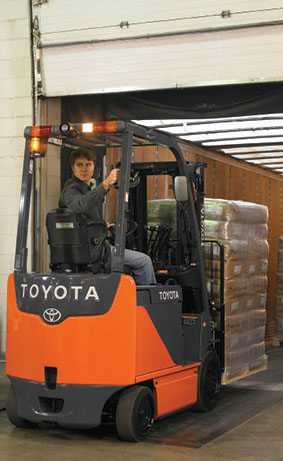
Let’s take a look at the individual steps in the receiving process, beginning with how shipments arrive.
Preparing for productivity
ASNs are a powerful way to increase efficiency through preparation, but collaboration with suppliers can improve receiving even without ASNs. For example, large retailers are increasingly taking control of their freight. Instead of pre-paying and burying the cost of transportation into their products, they might opt to be billed collect on a carrier of their choosing. With economies of scale, the distributor can enjoy cost and rate leverage with those carriers, but this practice also provides the opportunity to consolidate.
For example, if 20 less-than-truckload (LTL) loads are inbound from Los Angeles to a DC in Arizona, they can be routed to a consolidation point for one of carriers, then assembled up into one mixed truckload and delivered. This should improve visibility, because by definition you must know what’s going into that location—even without an ASN—to manage the consolidation.
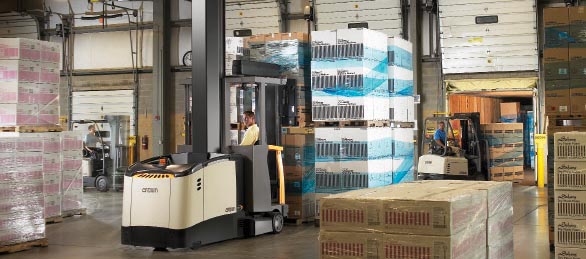
In this case, because the shipment is based on a purchase order (PO), if you know it is being shipped complete you then know everything on the particular shipment. If possible internally, you can match the PO information with the shipment information and ask suppliers to include the PO on the bill of lading. This is one of many ways the best retailers are cross-managing information for very granular detail on what’s coming into a facility.
That’s the exception, not the rule. Typically, a receiver might have a list of hot products or suppliers, so as soon as they see one, they take a slightly different action other than to economize. The first choice is always to economize with an eye toward lowest landed cost. But if, for example, an item is out of stock, its receipt can be handled accordingly. With detailed information assembled from internal systems, supplier systems and transportation partner systems, the receiver can be proactive about getting a hot item into its infrastructure as soon as possible.
That said, opportunities to economize still exist by weighing the constraints of time, price and service level. Retailers are prioritizing appointments and shipping methodologies based on that information. If there is 12 weeks of a product on hand, there’s no sense rushing a shipment. If there is zero on hand of a top product, it’s time to expedite, and it might even be best to skip the consolidation step.
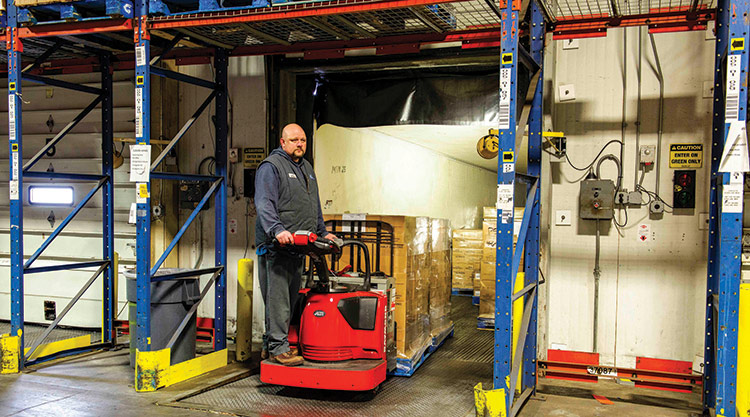
The knock at the door
ASN protocols offer the luxury of preparation, allowing the receiver to have the right people and equipment in the right place at the right time. Some ASNs only include item information and others are more detailed, but even the most basic information allows a manager to allocate resources more intelligently. It can be extremely valuable to know that one truck will need three people for hours, while another will need one person for 20 minutes, for example.
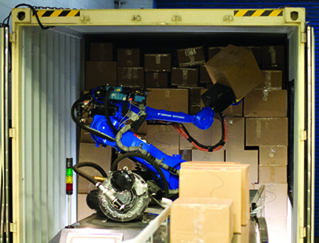
This type of prioritization is essential for effective management of two of the main dimensions of receiving. One dimension is defined by mode, whether LTL, full container or parcel carrier. The other dimension can be broken roughly along inbound shipments of either loose parcels or palletized unit loads. It is important to differentiate these dimensions, because certain loads do not require the driver to be present.
When trucks arrive at the gate, whether they are directed to a receiving dock or to the yard, a record of the quantity and location of products received is entered into an inventory management system. However, some loads require a more timely response from the receiver so the driver is not left waiting. Especially for LTL and loose parcels, there is pressure to receive quickly and accurately.
Ideally, this process begins in the yard. Transportation management systems (TMS) and yard management systems (YMS) serve as locators for yard inventory. When containers are dropped, a yard jockey is later directed to bring them to doors, much like a forklift operator is directed to pull a pallet. Some captive fleets use RFID on the yard and in trailers to immediately identify what’s in the yard at any given time.
At a basic level, some sort of yard management system is essential, even an internally developed one. This will help treat the yard like a locator. Parking slots are numbered and located so it is known what trailers and containers from what companies are in what slots at all times. The facility can then direct yard labor more effectively, and when outside partners come to pick up or drop off, the system can direct them quickly instead of looking up information each time a driver arrives.
Setting records
For all the potential headaches, the receiving function—whether manual or automated—centers around a very small bit of information. Whatever the unit, be it case or pallet, the receiver needs to tell the warehouse management system (WMS) it just received X in Y quantity. The master item file already knows how many cases are on pallets, how many units in a case, their height, etc. At the time of receipt, the WMS just needs to how much of Product A was received, and in what form factor.
Expanding upon the ASN information about incoming shipments, item-level carton labeling enables automated receiving processes. Automatic receiving systems use a combination of bar code scanning and often automatic print and apply for internal labeling. Automatic conveyors receive, scan, apply bar codes and use them for further diversion down the line.
After orienting incoming goods for scanning, a conveyor system can keep records automatically—at least for those vendors who are compliant with item-level labeling. Vendors might go through a probationary period with occasional audits. Requiring much less labor than detailed manual receiving, an audit might target every seven SKUs on a trailer to verify that, for instance, Item A is packed 12 to a case with four inners and 12 items of each.
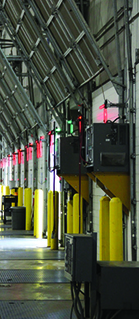 Large retailers often mandate compliance with these sorts of labeling processes, which helps streamline receiving and material flow through the broader network. If conveying automatically, a facility might bypass storage by directing an inbound carton to the shipping sorter, or straight from one door to another.
Large retailers often mandate compliance with these sorts of labeling processes, which helps streamline receiving and material flow through the broader network. If conveying automatically, a facility might bypass storage by directing an inbound carton to the shipping sorter, or straight from one door to another.
The receiver might also demand unique labels above and beyond UCC compliance, such as a store address so that when the item is crossdocked it is already allocated to a specific store. Automated receiving and the software required to opportunistically crossdock are not inexpensive, but even mom and pop operations can reduce manual labor using ASNs to improve receiving.
Receiving is a small but important step in the supply chain, but if done well it sets the stage for success throughout the distribution center. Efficiently handled, quickly processed and thoroughly accounted for, inbound products are now staged for their journey into the warehouse. In the next installment of Modern’s Warehouse Basics series, we will examine how received items make their way from the door to putaway and storage.
This story was created with generous support from Bryan Jensen, who has 32 years of experience in retail and wholesale distribution, transportation and logistics and is a vice president and principal with St. Onge Co. in York, Pa. Contact Bryan at (717) 840-8181 or at [email protected].


